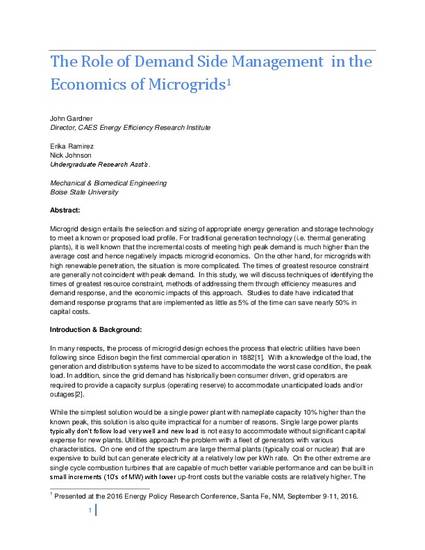
Presentation
The Role of Demand SIde Management in the Economics of Microgrids
Energy Policy Research Conference
(2016)
Abstract
Microgrid design entails the selection and sizing of appropriate energy generation and storage technology to meet a known or proposed load profile. For traditional generation technology (i.e. thermal generating plants), it is well known that the incremental costs of meeting high peak demand is much higher than the average cost and hence negatively impacts microgrid economics. On the other hand, for microgrids with high renewable penetration, the situation is more complicated. The times of greatest resource constraint are generally not coincident with peak demand. In this study, we will discuss techniques of identifying the times of greatest resource constraint, methods of addressing them through efficiency measures and demand response, and the economic impacts of this approach. Studies to date have indicated that demand response programs that are implemented as little as 5% of the time can save nearly 50% in capital costs.
Keywords
- microgrids,
- electricity,
- renewable energy,
- energy economics
Disciplines
Publication Date
September, 2016
Location
Santa Fe, NM
Citation Information
John F. Gardner, Erika Ramirez and Nick Johnson. "The Role of Demand SIde Management in the Economics of Microgrids" Energy Policy Research Conference (2016) Available at: http://works.bepress.com/john_gardner/14/
